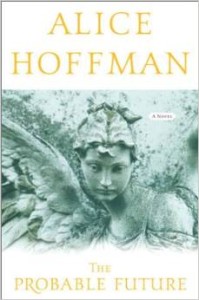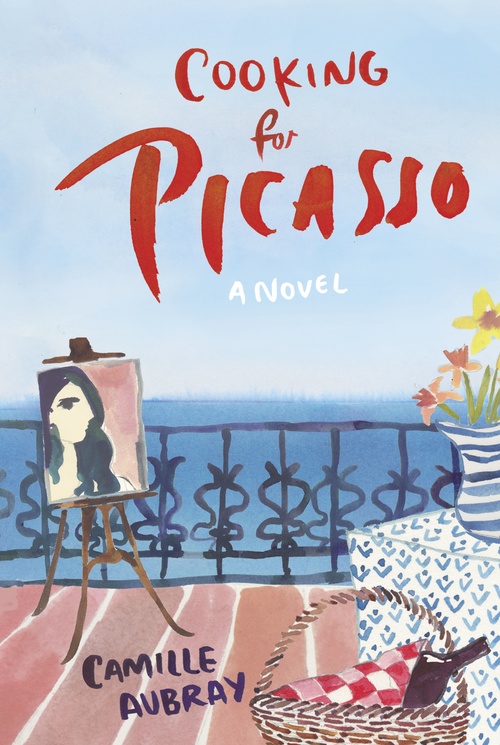
Jenny and Stella stepped carefully over the lady’s slipper orchids that grew up through the pine bark and mulch. They walked past pitcher plants and trout lilies until they came to the place of the woods where it was always dark, where people in this part of the Commonwealth vowed there were wild roses, the sort that disappeared if viewed by the human eye. They followed the dog, who seemed intent on a particular path. It was not an easy route, but it wasn’t impossible (321).
Hoffman’s interest in history is so strong, and her fascination with myth so vibrant, that in novels like this one the myth and history tend to overshadow the present-day characters. The story behind this story is that of the Sparrow women, a matrilineal clan established by the legendary Rebecca Sparrow, who walked out of the woods one day into the late seventeenth-century town of Unity, Massachusetts, and became an identifying myth, a focal point of its history and shame, as well as the ancestress for an unbroken chain of Sparrow women who all have some unique gift they acquire, as a sort of birthright, the morning of their thirteenth birthdays.
Elinor Sparrow can tell when someone is lying, which leads to her estrangement with her daughter, Jenny, who can ‘see’ other peoples’ dreams, falls in love with the haunting dream of the practiced liar and cheat Will Avery, and runs away with him. Stella, the first of the Sparrow women to have silver-white hair, wakes up on her thirteenth birthday with the ability to see how the people around her will die. The consequences of this unwanted gift, when she tries to intervene and save the life of a haunted woman, leads first to her father’s imprisonment on suspicion of homicide and then to Stella’s return to Unity, the first in a series of intertwined events and coincidences that will end in a near-universal repair of broken relationships, broken hearts, and a peaceful mending of other assorted fractures.
The plot movement toward reconciliation is lovely, and a personal favorite of mine, but it seems at odd with the haunting, ubiquitous tension created throughout the novel by the repeated emphasis on the crimes done to Rebecca Sparrow (whose ‘gift’ was that she could not feel pain–like many of Hoffman’s other repeated images, like Elinor’s obsession with the blue rose, it becomes in the end a lovely metaphor). The Hathaway family still feels guilt for being part of the posse that murdered Rebecca; the ‘dead horse’ is a three-hundred-year-old myth that every Unity school child knows. Snowdrops still bloom in the woods where drops of Rebecca’s blood were said to have fallen. The universal, imperative presence of the town’s history, the pain that endures, and the many subsidiary images that echo and amplify it–like the peach trees said to have washed ashore during a shipwreck, who have been scattered all over the countryside by hopeful young maidens carrying peach stones as love tokens–strikes a mournful undertone that lingers, and in the end seems to lightly mock the many new love affairs blossoming at the book’s end.
It makes for more interesting reading, on the whole, and it also seems to point to the novel’s central obsessions. The book might pretend it wants to be about love; Hoffman strives for several passages about Love that try to be lyrically resonant but come across as a little forced, because the most convincing truth about love that emerges from these characters’ struggles is the devastation left in the loss of it, whether through death, infidelity, or both. One might also believe the book wants to be about lies–“White lie, pink lie, black-and-blue lie” (295)–since so much of the conflict rests on what happens when characters lie to each other, or to themselves. But if there is any theme at all (and it does seem like Hoffman is trying to be thematic; she reaches often for the universal, the philosophical, the apparently profound) it is about the power of myth, of story, of legend to freeze time, to imprint a whole town’s collective psyche, to burn indelible marks into face or ground or memory.
This is where Hoffman as an author really succeeds, and where the book gains its haunting strength. And the mythical history of Rebecca Sparrow, and the other Sparrow women, and of the other characters the reader comes to know and care about–Dr. Stewart and his charming but doomed son Hap; Will and his steadfast, rock-solid brother Matt; Liza Hull and Juliet Aronson as more women with fragile hearts–is so enchanting here that the reader might very well be forgiven if she comes away wishing she lived in a town and came from a family with a known history stretching back hundreds of years that still seemed to present and alive.
The last strength of the book seems like a minor point, but really isn’t. Hoffman’s attention to the natural world is the boon companion of her mytho-history and the second element that seems to overwhelm, or at least overshadow, the characters and their conflicts, for the loveliness of the detail of flora, fauna, of light and shadow, of rock formations or fathomless lakes or many different kinds of rain and snow make the landscape come truly alive in a way that then reflects interest back on the characters. They are so firmly grounded in time and place, so animated by their setting, that the Sparrow women and the men who love them cannot fail to seem alive, just as the lovely detail lends light and air to Hoffman’s prose, making it seem musical, shimmery, easy to digest but surprisingly nourishing.
I have yet to read a Hoffman book that disappoints, and in fact I keep a novel or two of hers unread on my shelves as insurance, as a promise of future pleasure. I’ve yet to be as fiercely moved as any of her books as I was by The Third Angel, but as a writer, I am always satisfied by the tight structure and careful plot management of her novels, as well as–usually–the kind of prose that looks effortless, and sounds wonderful, even if or when it isn’t. This was one of those rare novels in which I actually had to stop reading and flip ahead to make sure my favorite character didn’t die, so overcome was I by suspense, and so desperate worried was I that all the foreshadowing would come to pass. (Yes, I read ahead in books. It’s a fatal flaw.) There is much to relish in this absorbing novel, and if the truths about love seem a little thin (due to my own cynicism, no doubt), the lush, living setting and fascinating history of the Sparrow women and the town of Unity are not.
